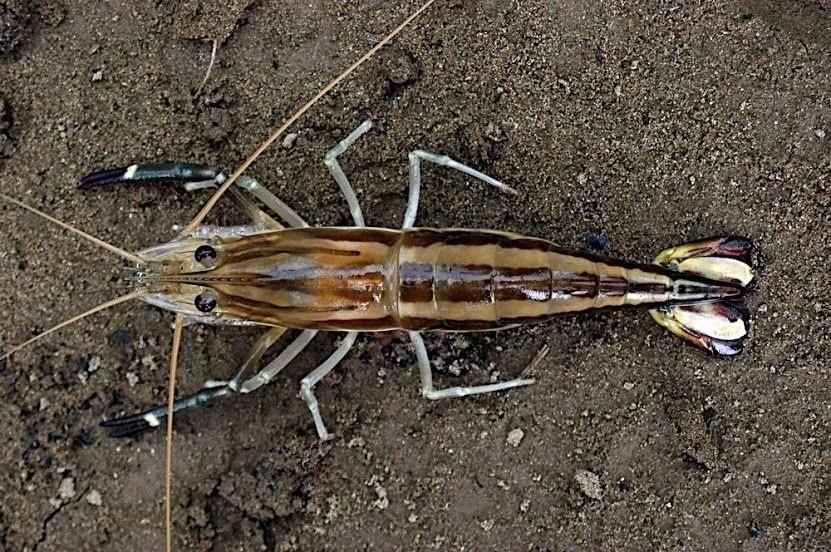The word Chagaras holds a surprising duality, encompassing creatures of both the land and the water. Depending on the context, it can refer to vibrant textiles steeped in tradition or a delectable freshwater crustacean. This article delves into the fascinating world of chagaras, exploring their unique characteristics and cultural significance.
Chagaras: The Energetic Grasshoppers
In the lush landscapes of tropical regions across Africa, Asia, and the Americas, resides a remarkable group of insects known as chagaras, also referred to as palm grasshoppers. With over 2,000 documented species, chagaras boast an impressive diversity. Their sizes range from a modest 1 inch to a formidable 5 inches, showcasing a spectrum within the insect world.
True to their name, chagaras have a strong affinity for palm trees. They begin their life cycle as tiny eggs deposited on palm fronds. As they mature, they undergo multiple molting stages, eventually transforming into powerful leapers and flyers. A single bound can propel a chagara a staggering quarter-mile, a testament to their remarkable leg strength.
The vibrant colors and intricate patterns adorning many chagara species are a sight to behold. From emerald greens and fiery oranges to sapphire blues and jet blacks, their bodies showcase a dazzling array of natural pigments. These colors may serve as camouflage amidst the lush foliage of their habitat or act as a form of communication within their species.
Chagaras play a vital role in the ecological balance of their ecosystems. As herbivores, they feed primarily on palm leaves, contributing to the breakdown of plant matter and nutrient cycling. Additionally, they serve as a vital food source for various predators, including birds, reptiles, and small mammals.
Chagaras: A Culinary Delicacy
Shifting our focus from land to water, we encounter another interpretation of “chagara” – a freshwater crustacean found in Puerto Rico and other Caribbean islands. Often referred to as a chágara, river prawn, or crayfish, this edible delicacy is a staple in local cuisine.
These chagaras inhabit rivers and freshwater streams, thriving in clean, oxygenated waters. They are typically caught using nets or traps set by local fishermen. Their sweet, succulent flesh boasts a unique flavor profile, making them a prized ingredient in various Caribbean dishes.
Chágara preparation methods vary, but they are often boiled or grilled, allowing their natural taste to shine through. They can be enjoyed whole or used to create flavorful broths and stews. Additionally, chágara shells are sometimes utilized for decorative purposes, adding a touch of local flair to homes and businesses.
The sustainable harvesting of chágara is crucial for maintaining healthy freshwater ecosystems and preserving this important food source for local communities. Responsible fishing practices and conservation efforts ensure the continued availability of chagaras for future generations.
Chagaras: A Tapestry of Tradition
Surprisingly, the word “chagara” also takes on a cultural significance in South America, particularly in Ecuador and Colombia. Here, it refers to a vibrant textile woven by indigenous communities using a meticulous process passed down through generations.
The creation of chagara textiles begins with the gathering of raw sheep’s wool. The wool is then spun into yarn, meticulously dyed using natural ingredients like plants and minerals. The final stage involves weaving the yarn on a backstrap loom, a traditional technique that requires skill and dexterity.
Chagara textiles are not merely functional – they are works of art. They are adorned with intricate geometric patterns and symbolic motifs that hold deep cultural significance. These vibrant tapestries often depict stories, beliefs, and traditions specific to the indigenous communities that create them.
The weaving of chagara textiles serves as a powerful form of cultural preservation. It connects the present generation to their ancestors and ensures that these age-old traditions are not lost. Additionally, the production and sale of chagara textiles provide a vital source of income for indigenous artisans.
The Enduring Legacy of Chagaras
The word “chagara” bridges the gap between the natural world and human culture. It represents the energetic grasshoppers that thrive in tropical ecosystems, the delectable crustaceans that grace Caribbean tables, and the vibrant textiles woven by communities steeped in tradition.
As we delve deeper into the world of chagaras, we gain a newfound appreciation for the diversity of life on Earth and the rich tapestry of human cultures. Whether encountered as a leaping insect, a savory dish, or a beautiful textile, chagaras leave a lasting impression, reminding us of the interconnectedness of our world.

